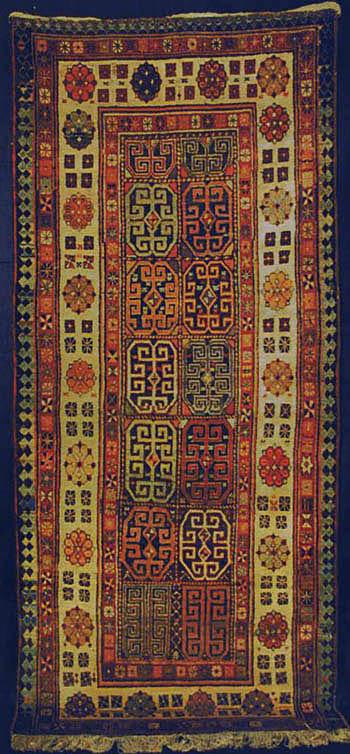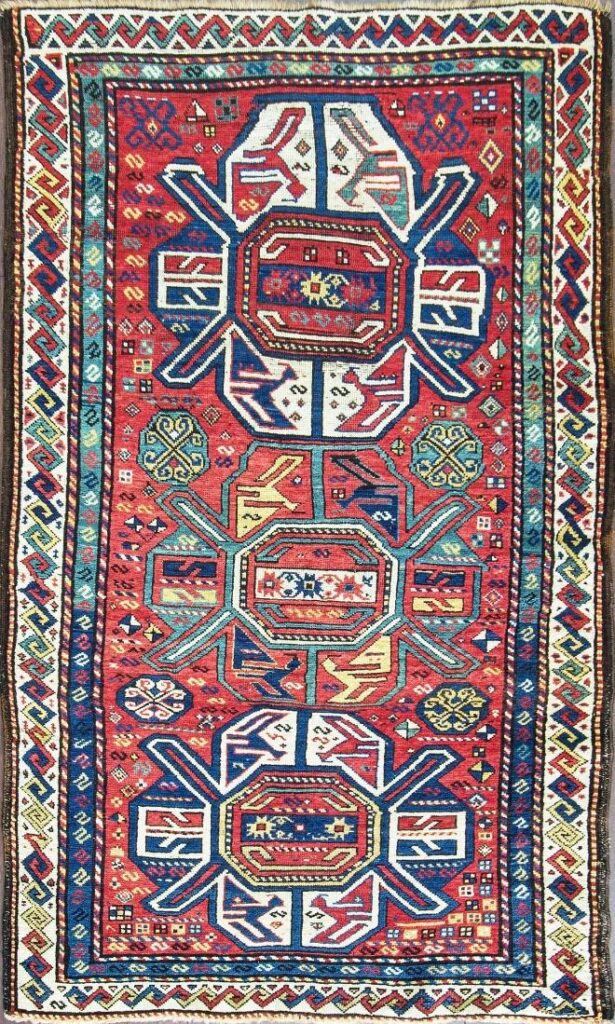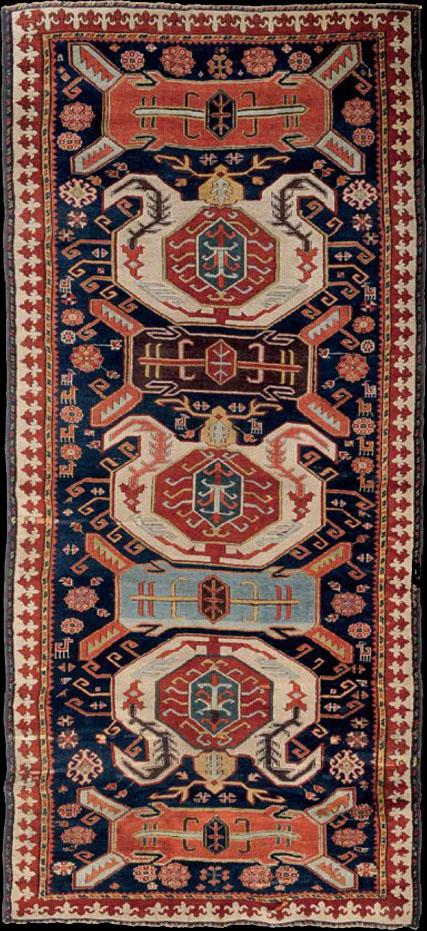Lankaran (Lenkoran) Rugs
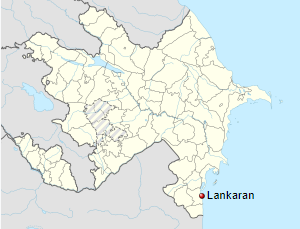
Lankaran (Lenkoran, Lənkon). A city and district on the Caspian Sea in the southeastern Caucus, Azerbaijan Republic. Lenkoran was once the capital of the khanate of Talish.
Talish or Talysh are an Iranian ethnic group indigenous to a region which spans the South Caucasus and the southwestern shore of the Caspian Sea. They speak the Talysh language, one of the Northwestern Iranian languages. It is spoken in the northern regions of the Iranian provinces of Gilan and Ardabil and the southern parts of the Republic of Azerbaijan. Northern Talysh (the part in the Republic of Azerbaijan) was historically known as Talish-i Gushtasbi the capital of which used to be Lankaran.
Weaving rugs and kilims is a common practice between Talysh people like other Caucasian ethnics. A Caucasian rug motif is named “Lenkoran” after the city.
Technical aspects and the structure of Lankaran Rugs
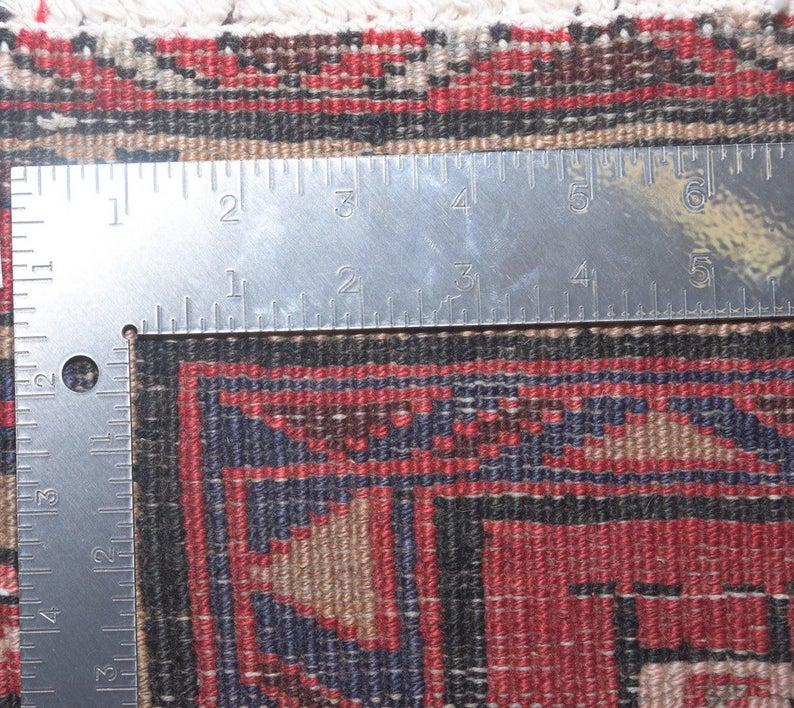
Antique Lankarn rugs are, generally, coarse in weave with a knot density of about 65 to 85 knots per square inch. Nevertheless these are finer than neighboring Karabaghs and Kazaks.
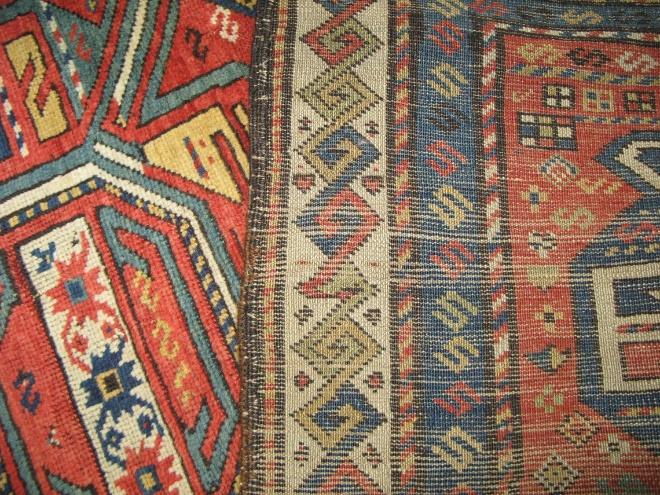
Lankarans are woven with symmetric (Turkic) knots on woolen foundation. Pieces are normally woven in long formats. Runners, too, are found among antique Lankarns.
Dyeing and painting of Lankaran rugs
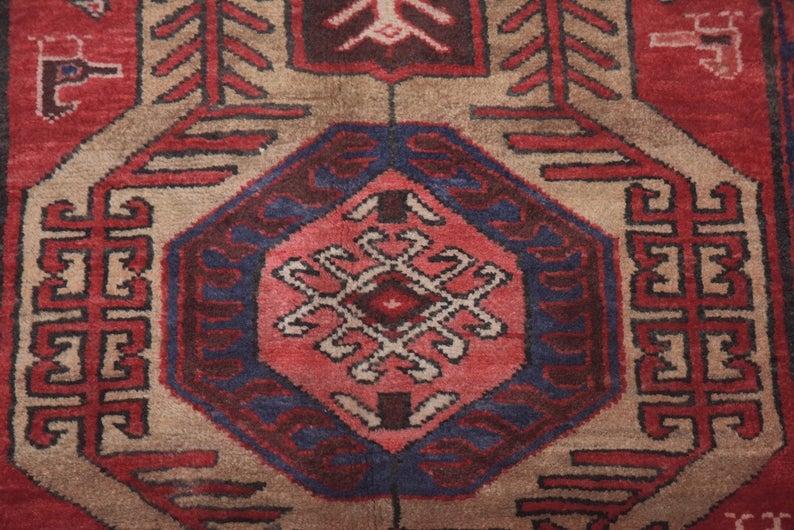
Madder and azure are dominant on Lankaran palette with a good amount of ivory or camel. Secondary palette consisted of yellow, light green, brown, and pink.
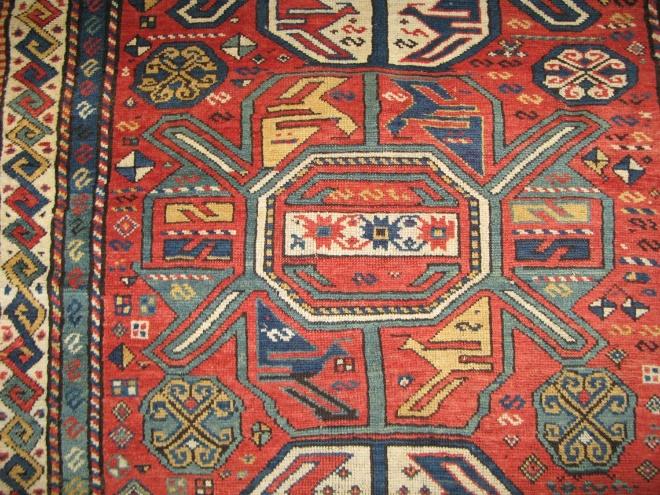
Lankaran Fields are usually colored with midnight blue. However lighter shades of blue are also possible. Borders are colored with light tones such as ivory or camel.
Designs and patterns of the Lankaran rugs
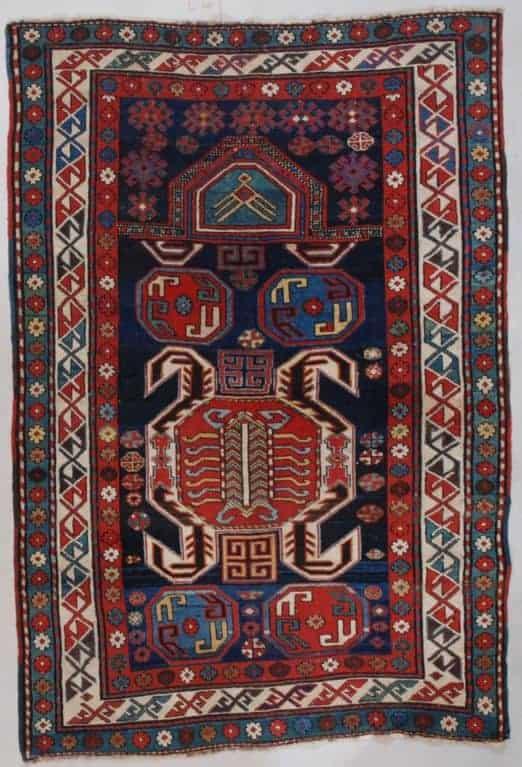
Double and triple-medallioned designs are common here. The most popular medallion is named after the city Lenkoran. It is interpreted as a large geometricized tulip, lily or calyx, ornamented with projecting hooks and inner leaf-shaped linear forms. Some suggest that the motif could be a version of dragon motif. It is woven not only by Lankaran’s weavers, but by all Talysh people.
The Lenkoran medallions are large and intricate enough to leave no more room for the fields. Many Lankaran fields are almost empty, or filled with tiny round blossoms. Rows of such blossoms in alternating colors make two narrow margins in for Lankaran’s borders.
Kilims of the region, with their bright colors and Laleh Abbasi borders, bear resemblance to Persian Ardabil and Moghan pieces.
